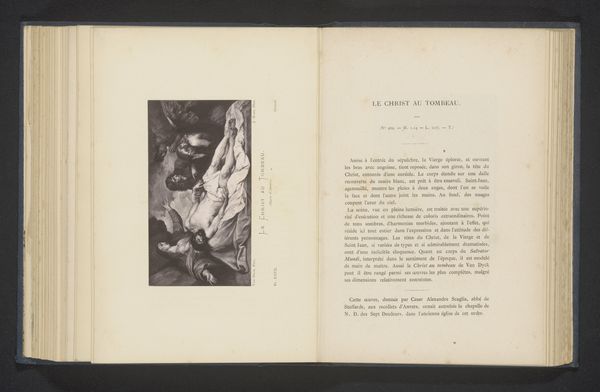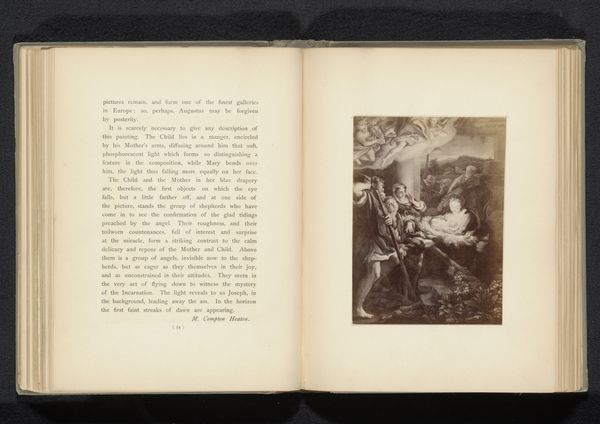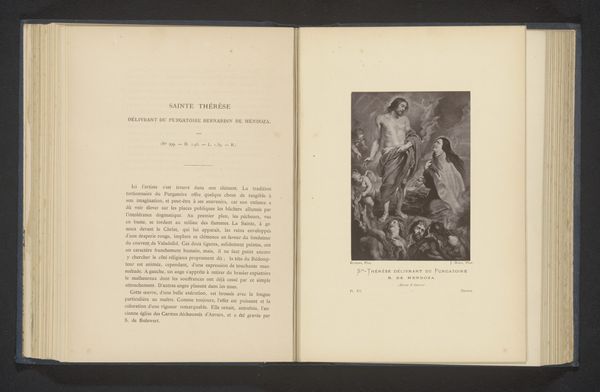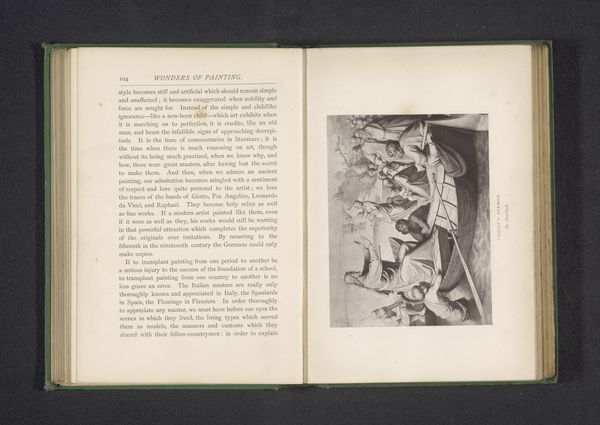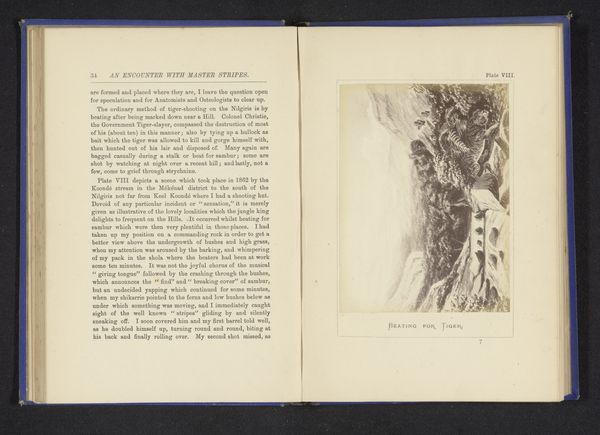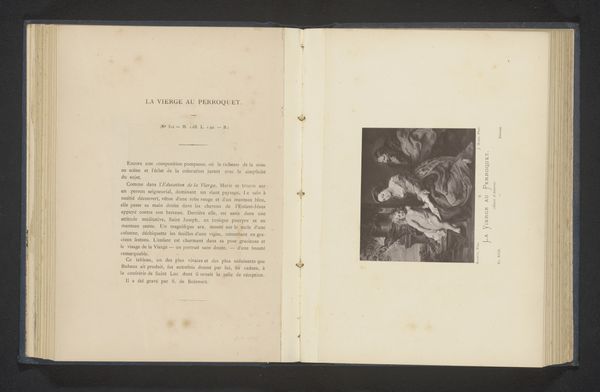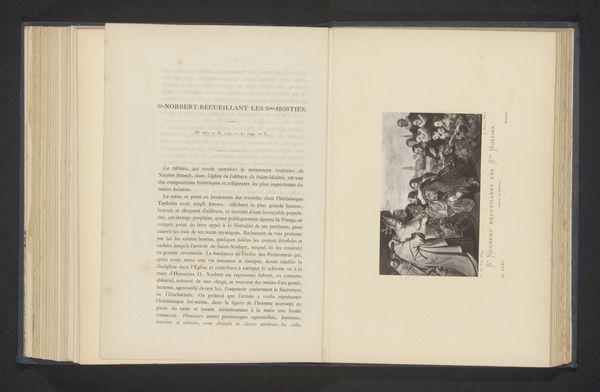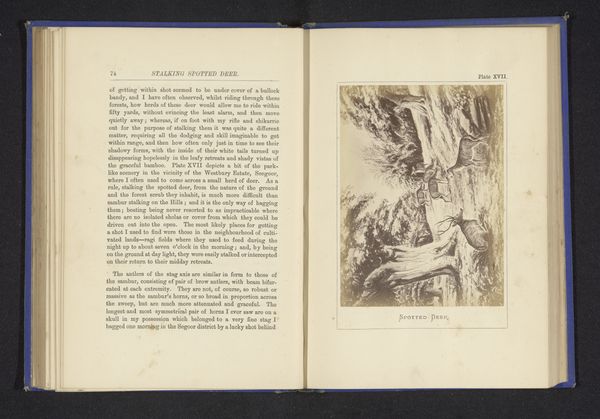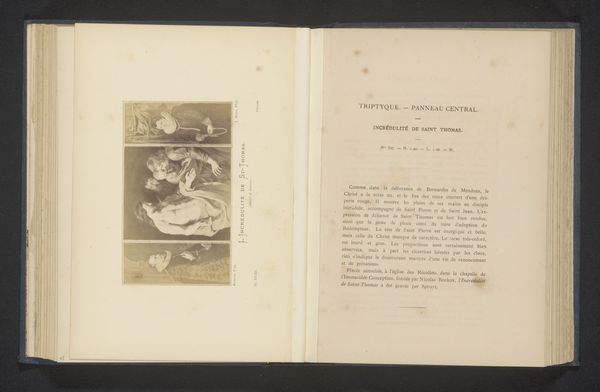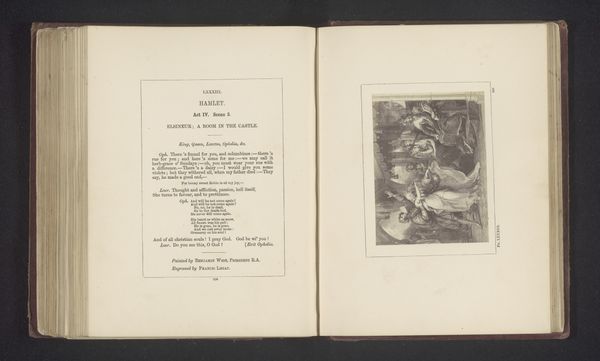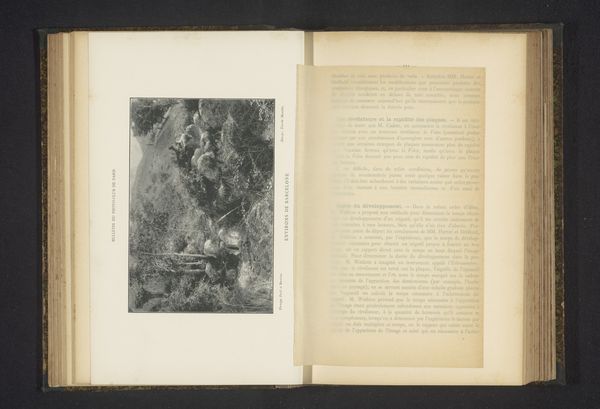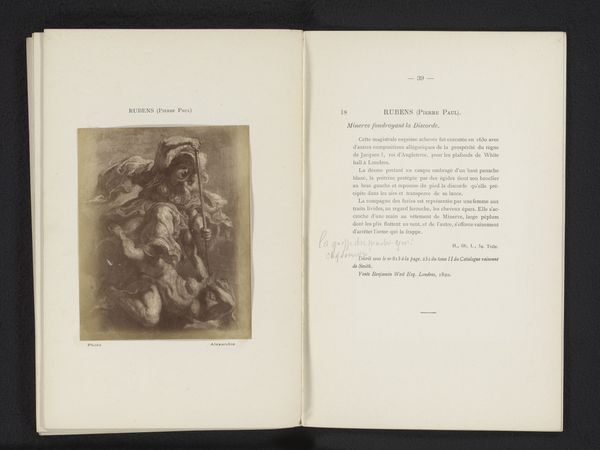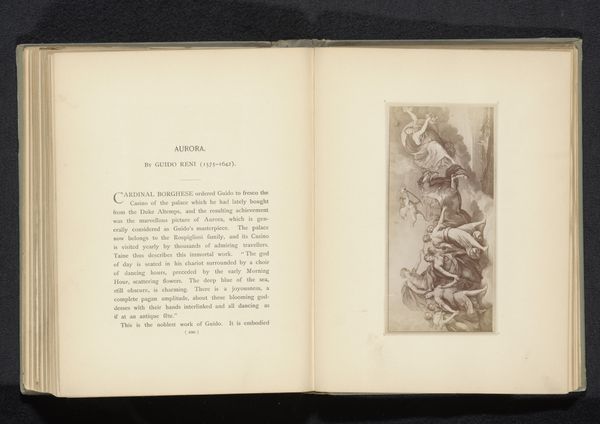
Reproductie van Christus aan het kruis tussen de twee dieven door Peter Paul Rubens before 1877
0:00
0:00
Dimensions: height 117 mm, width 86 mm
Copyright: Rijks Museum: Open Domain
Editor: This etching reproduces Peter Paul Rubens's "Christ on the Cross Between Two Thieves," likely created before 1877. The scene is obviously emotionally charged. There’s so much drama and suffering depicted. It almost feels like I'm intruding on a profoundly intimate moment. What is your take on it? Curator: Seeing this piece through a historical lens, it is useful to think about the role images like this played within 19th-century European culture. Reproductions, like this etching, democratized access to Rubens’s monumental altarpieces. But it also transformed the work’s reception. Consider how this shifts from a site of public ritual to something more intimate and personal. The printing and publishing industries played an important role here, no? Editor: Definitely, these prints would have circulated much more widely. So, in that context, would you say its purpose changes from religious expression to something else entirely? Curator: Not entirely. Even as the meaning evolved with different audiences and contexts, the political and social power of the Church still shaped art production. And further, that imagery remains embedded within a religious understanding of power, faith, and community. I find myself wondering if the print diminishes or amplifies that message... What do you think? Editor: It's hard to say definitively, but I see your point about how reproduction changes the social impact. This helps me see beyond the immediate drama. Curator: Precisely. Considering the social and political history forces us to rethink assumptions of purely religious meaning. It seems images always operate on multiple levels. Editor: That's fascinating; looking at its wider distribution helps add complexity to my view. Thanks!
Comments
No comments
Be the first to comment and join the conversation on the ultimate creative platform.

